US EPA Proposes Changes to Ballast Water Regs
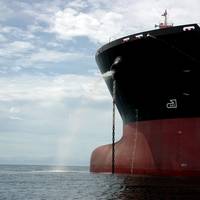
The U.S. Environmental Protection Agency (EPA) is issuing a supplemental proposed rule to reduce the spread of invasive species though ballast water that occurs with normal operation of large marine vessels.Following public input on EPA’s 2020 proposed rule—including meetings with states, tribes and other stakeholders—the agency is now issuing a Supplemental Notice to share new data and control options raised by stakeholders. This supplemental proposal will bolster the development…
US Inland Waterways: Big Money, New Projects, Help Wanted
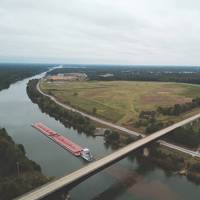
New federal money promises dramatic impacts throughout the United States’ inland waterways system in 2022 and beyond. This report focuses on America’s central rivers; the Western rivers will be covered in a future report. These central rivers reach 11,000 miles, from Pennsylvania to Florida and from Texas to South Dakota.Consider the money within the U.S. Army Corps of Engineers “Civil Works Program Infrastructure Investment and Jobs Act (IIJA), 2022 Construction Spend Plan.”In Arkansas…
Federal Dollars Available for the Brandon Road Interbasin Project
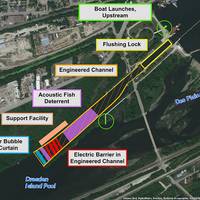
The Brandon Road project is on the Des Plaines River, in Joliet, about 50 miles downstream from Chicago. That location offers a last chance to keep Aquatic Nuisance Species (ANS) out of the Great Lakes. The Army Corps explains that a “new structural control point would include the Technology Alternative Acoustic Fish Deterrent with Electric Barrier, which includes, a bubble curtain, an engineered channel, an electric barrier, and flushing lock.” This would “to the maximum extent…
Expert Advice: New Ballast Water Guide
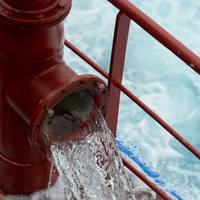
If you and your crew are facing questions about ballast water management (BWM) and related regulatory deadlines, it would be worth your while to download a new (January 2021) “Ballast Water Management Systems User Guide,” an extensive, in-depth look at evaluating, selecting and installing a BWM system. The guide was published by MARAD and Glosten for the Ship Operations Cooperative Program (SOCP). It is geared primarily toward U.S.-flag operators in domestic and international trade.As most mariners know, BWM, overseen federally by U.S. EPA and the Coast Guard, includes a number of activities.
The Top 10 Workboat Stories for 2019
Choosing the year’s ‘top stories’ is always a difficult task. Many compelling story threads played out, each dramatically impacting the North American waterfront, and in particular, the workboat sector – each in their own unique way.The Infrastructure Battle ContinuesThe EXECUTIVE SUMMARY H.R. 2396, the “Full Utilization of the Harbor Maintenance Trust Fund Act”, will ensure that the Harbor Maintenance Trust Fund is used for its intended purpose – maintaining Federally-authorized harbors. The legislation would allow the U.S. Army Corps of Engineers (Corps) to dredge all Federal harbors to their constructed widths and depths. Unfortunately, Washington continues in chaos with another continuing resolution on the budget; the next one expires on December 20th.
USCG VIDA policy proposal
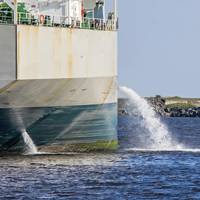
On 31 July, the US Coast Guard published a notice in the Federal Register stating that it is seeking comments on a draft policy letter that, if adopted, would establish the Coast Guard’s policy for acceptance of type-approval testing protocols for ballast water management systems (BWMSs) that render nonviable organisms in ballast water and may be used in addition to the methods under existing regulations. This policy would include the process for incorporating accepted protocols into the type-approval procedures established under existing regulations…
Ballast Water Update: Weighing the Advent of VIDA

The hard-fought passage of VIDA promises a simpler, more unified and logical set of environmental standards related to the discharge of myriad vessel streams. Industry wanted it, and now it is here. Will it deliver, and if so, when? That depends on who you talk to.As most commercial maritime operators know, US ballast water regulations made a sharp turn last December. That’s when President Trump signed the Frank LoBiondo Coast Guard Authorization Act of 2018.That legislation contained Title IX – the “Vessel Incidental Discharge Act (VIDA)…
VIDA & BWMS Reform
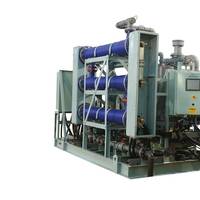
On December 4, President Trump signed into law the Frank LoBiondo Coast Guard Authorization Act of 2018 (S. 140). Title IX of the legislation is the Vessel Incidental Discharge Act of 2018 (VIDA). VIDA will largely cut through a morass of conflicting and confusing requirements that have developed over a number of years relating to discharges into US waters. This purpose of this new legislation is to: (1) provide for the establishment of uniform and environmentally sound standards and requirements for the management of discharges incidental to the normal operation of a vessel…
USCG Posts Recap of Ballast Water Management & Technology Conference
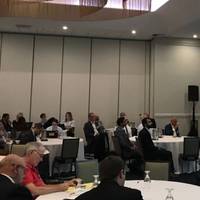
Extensions, type approvals and next steps were all prominent on the agenda.September’s Ballast Water Management and Technology North America conference saw USCG staff from the Office of Operating and Environmental Standards and the Marine Safety Center giving conference attendees an update on various aspects of the Coast Guard’s ballast water program. Following is a recap of those presentations for our readers who were unable to attend:Ms. Regina Bergner and Mr. Matthew Reudelhuber with the Office of Operating and Environmental Standards, and Lt.
Mobile System Used for Treating Ballast Water

Glosten and Global Diving & Salvage say they have used a mobile system to treat ballast water on board a 350-foot marine vessel moored in Coos Bay, Ore.The firms deployed the Glosten Ballast Responder successfully treating all 3,990 tons of ballast water on board. The contingency response team deployed from Seattle the morning of May 21 and certified all ballast water on board as safe for discharge by the evening of May 23.“The system and team performed very well,” said Glosten Principal and ballast water treatment expert Kevin Reynolds, PE.
Lines in the Water
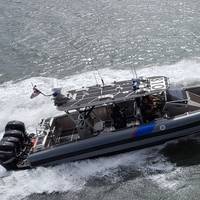
There are a variety of jurisdictional lines in the water. The first line to be considered is the national boundary between two adjacent or nearby countries. Adjacent countries tend to draw agreed boundaries extending their shoreside boundaries, with accommodations for headlands, capes, etc. Most national boundaries have been agreed upon long ago. A few, though, are not officially resolved. Somewhat surprisingly, of the four marine boundaries between Canada and the U.S., three are still in dispute.
Vega Reederei faces Penalty for Ballast Water Discharge
The Coast Guard, after an investigation of ballast water discharge violations, initiated civil penalty proceedings against the operator, Vega Reederei GmbH & Co. KG, of the bulk carrier Vega Mars, Feb. 2, 2017. Investigators found that around Jan. 29, 2017, while moored in Tacoma, ballast water was discharged from the vessel without the use of a Coast Guard approved ballast water management system or other approved means, a violation of the National Invasive Species Act with a maximum penalty for $38,175. Vessels equipped with ballast water tanks that operate in the waters of the United States must employ an approved ballast water management method to prevent the unintentional introduction and spread of aquatic nuisance species.
New US Ballast Water Research Lab Opened
Traveling across the globe from port to port, the U.S. Navy fleet transports sailors and Marines, aircraft, and supplies. Unfortunately, ships can also unintentionally transport stowaways, small organisms which live in ballast water. Most people would not look at small organisms like mitten crabs or zebra mussels and think they are a major threat to the environment – and in their natural habitats they pose no threat. But what happens when these organisms are introduced into a new ecosystem? According to Rachel Jacobs, a chemical engineer in the Wastewater Management Branch at Naval Surface Warfare Center, Carderock Division, the results of introducing non-native species into a new environment can be disastrous for the ecosystem…
Ballast Water Management Systems: Let the Games Begin

With the accession by Finland to the International Convention for the Control and Management of Ships’ Ballast Water and Sediments, 2004 (better known as the Ballast Water Management or BWM Convention), there are now sufficient ratifications for the Convention to enter into force. Entry into force will occur on 8 September 2017. It has been an agonizingly slow process for a convention that was adopted with such high hopes. Starting in the late 1970s as vessels became larger and faster…
[Op-Ed] Ballast Water Facts, Not Hype
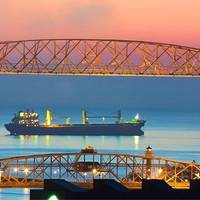
An Op-Ed issued by the Lake Carriers’ Association, American Great Lakes Ports Association and Great Lakes Maritime Task Force addresses the “exaggerations and inaccuracies” surrounding the Vessel Incidental Discharge Act (VIDA), and explains how the legislation will best protect the Great Lakes from aquatic nuisance species. Recently, several articles, editorials and letters have perpetuated exaggerations and inaccuracies about the Vessel Incidental Discharge Act (VIDA). We believe the public deserves the rest of the story.
RINA Group Delivers Ballast Water Management Guidance
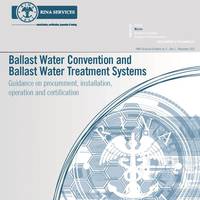
International classification society RINA has completely revised and updated its guidance on the Ballast Water Convention and the procurement, installation, operation and certification of Ballast Water Treatment Systems. The guidance is now available to shipowners, shipyards and equipment manufacturers as a Technical Bulletin. Dino Cervetto, Director of Technical Services, RINA Services, says, “The IMO Ballast Water Convention is almost certainly going to come into force in 2016.
US Orders EPA to Rewrite Ship Ballast Water Dumping Rules
A federal appeals court in New York ordered the government to rewrite its rules regulating the discharge of ballast water by ships, in a victory for environmental groups that said the rules were too lenient and threatened the nation's waterways. The 2nd U.S. Circuit Court of Appeals on Monday said the Environmental Protection Agency acted "arbitrarily and capriciously" when it decided in 2013 to follow an international standard governing the discharge of harmful organisms, though technology was available to adopt a higher standard. Writing for a 3-0 appeals court panel, Circuit Judge Denny Chin also said the EPA, using its authority under the Clean Water Act…
LCA Sees Progress on Great Lakes Issues
Prospects for ending the dredging crisis and resolving other pressing issues on the Great Lakes are the best in 12 years according to Lake Carriers’ Association (LCA), the trade association representing U.S.-flag vessel operators on the inland seas, in its State of the Lakes report issued today. Only uniform, Federal regulation of ballast water remains elusive, particularly since Canada has yet to issue its ballast water regulations. According to LCA, the greatest progress has been made on the dredging crisis. Just a few years ago more than 18 million cubic yards of sediment clogged ports and waterways and the backlog was projected to grow. Now, the backlog is down to approximately 17 million cubic yards and shrinking.
Cammell Laird Environmental Package Targets Ferry Market

Birkenhead shipyard and engineering services company Cammell Laird said it has developed an advanced shipyard environmental package for ferries, following its strongest year of trading in the sector. Cammell Laird said it has docked 24 ferries between 2013 and the beginning of 2014 and, in addition, has carried out a further 24 afloat repairs for ferry operators. During 2013 Cammell Laird repaired, built and converted almost 250,000 gross tons of ferry and Ro-Ro ships for a wide range of owners. Already in 2014 it has docked and repaired ferries of 150,000 gross tons.
UK Shipyard Spotlights Ferry 'Bespoke Eco-Packages'
Cammell Laird says it has developed one of the most advanced ‘bespoke environmental’ packages for ferries in the shipyard industry, following its strongest year of trading in the sector. Cammell Laird technical manager Paul Ashcroft said ‘a massive challenge and focus’ for the sector moving forward is to find cost effective solutions to the new environmental standards ferry companies have to meet. “There has never been greater pressure on ferry companies to become greener than now,” he said. “As a result we have developed a highly advanced and specialised new environmental package addressing some of the hardest challenges. Mr Ashcroft said Cammell Laird’s green package has been developed to be bespoke and address the challenges faced by each individual ferry.
The Coast Guard’s Proposed Maritime Preemption Assessment Framework

What it may foretell about the coming towing vessel rule. In the May 2013 issue of Maritime Reporter & Engineering News, Dennis Bryant published a provocative article titled Rebuilding the Presumption of Preemption. The Coast Guard has asserted in the past and believes today that consistent standards of universal application and enforcement, coupled with Federal initiatives to meet unique regional concerns, best meet local and national safety and environmental goals with the least disruption to maritime commerce. 78 Fed. Reg. 79,243.
Noble Pleads Guilty to Enviro Charges Surrounding Kulluk
Noble Drilling (U.S.) LLC was charged with environmental and maritime crimes for operating the drill ship Noble Discoverer and the drilling unit Kulluk in violation of federal law in Alaska in 2012, the Department of Justice announced. Under the terms of a plea agreement filed in federal court today, Noble will plead guilty to eight felony offenses, pay $12.2 million dollars in fines and community service payments, implement a comprehensive Environmental Compliance Plan, and will be placed on probation for four years. In addition, Noble’s parent corporation, Noble Corporation plc, headquartered in London, England, will implement an Environmental…
Coast Guard’s Proposed Maritime Preemption Assessment Framework

In the May 2013 issue of Maritime Reporter & Engineering News, Dennis Bryant published a provocative article titled Rebuilding the Presumption of Preemption. The Coast Guard has asserted in the past and believes today that consistent standards of universal application and enforcement, coupled with Federal initiatives to meet unique regional concerns, best meet local and national safety and environmental goals with the least disruption to maritime commerce. 78 Fed. Reg. 79,243.







